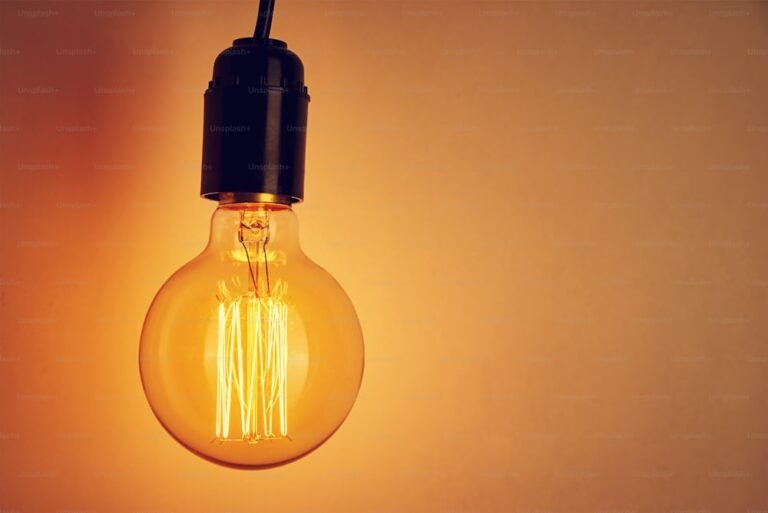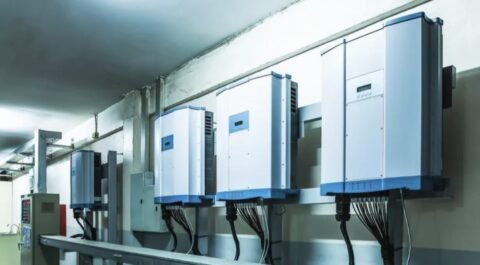Optimizing efficiency is essential in today’s business and industrial settings in order to cut down on impact on the environment and operational costs. The implementation of LED warehouse lighting is one of the most significant methods by which organizations may accomplish these objectives. When compared to conventional lighting solutions, LED technology offers a significant improvement because it provides higher energy efficiency, a longer lifespan, and improved lighting quality and quality.
Understanding LED Technology
In the semiconductor industry, light-emitting diodes, sometimes known as LEDs, are devices that are capable of converting electricity into light by means of the flow of electrons. In contrast to conventional incandescent or fluorescent light bulbs, which heat filaments or gasses in order to generate light, light-emitting diode (LED) bulbs generate very little heat during operation. LEDs, due to their inherent efficiency, are able to consume a substantially lower amount of energy while simultaneously delivering illumination that is both brighter and more consistent. LEDs, due to their inherent efficiency, are able to consume a substantially lower amount of energy while simultaneously delivering illumination that is both brighter and more consistent. Smart LED bulbs further enhance this efficiency with added features and control options.
Benefits Of LED Warehouse Lighting
Energy Efficiency: Traditional lighting sources, such as fluorescent or HID (High-Intensity Discharge) lamps, often consume between fifty percent and seventy percent more energy than LED lights, which provide a far higher level of energy efficiency. The savings in energy bills and operational expenses that result from this efficiency are directly correlated to the efficiency of the warehouse.
Long Lifespan: LED warehouse lights have an extraordinarily long lifespan, typically lasting between 50,000 and 100,000 hours or even longer. When compared to conventional light bulbs, which may need to be replaced on a regular basis, LEDs reduce the amount of maintenance work and expenses associated with the downtime that is required for bulb replacements.
Improved Light Quality: LEDs offer greater light quality, with consistent brightness, less flickering, and enhanced color rendering characteristics. In warehouse environments, where excellent sight is vital for duties such as inventory management, picking operations, and staff safety, this is of the utmost importance.
Instant On/Off Capability: Unlike high-intensity discharge (HID) lights, which require a period of time to warm up, light-emitting diode (LED) lamps deliver instant illumination. This function is beneficial in warehouses since it allows for the rapid switching of lights, which improves both the operational efficiency and the safety of the facility.
Durability and Reliability: LED lights are excellent for use in demanding warehouse conditions because of their durability and reliability. LED lights are resistant to shock, vibrations, and temperature variations, making them suitable for use in these environments. Even under tough settings, they continue to operate and be reliable, which guarantees that they will continue to produce the same amount of light throughout their lifespan.
Steps To Saving Money And Energy With LED Warehouse Lights
1. Conduct A Lighting Audit
Before transitioning to LED warehouse lighting, conduct a comprehensive lighting audit. Evaluate current lighting levels, energy consumption patterns, and maintenance costs. This evaluation assists in determining the locations in which LED upgrades have the potential to generate the highest return on investment (ROI) and increase energy savings.
2. Make Sure You Pick The Appropriate LED Fixtures
The individual requirements of your warehouse space should be taken into consideration while selecting LED lighting. Think about things like the height of the ceiling, the size of the area, the requirements for lighting distribution (task lighting versus ambient lighting), and the characteristics of the surroundings. When it comes to lighting, high bay LEDs are perfect for high ceilings and vast open areas, whilst linear LEDs are perfectly suited for aisles and corridors.
3. Make The Lighting Design Look Better
To achieve the highest possible energy efficiency while minimizing waste, you should design a lighting layout. In order to alter the levels of illumination based on occupancy and the amount of daylight that is available, lighting zoning, controls, and sensors should be utilized. In order to further improve energy savings, motion sensors, dimmers, and programmable timers can be utilized to ensure that lights are only turned on when they are required.
4. A Comparison Of New Installations And Retrofitting
It is important to determine if it is more cost-effective for your warehouse to install new LED lighting or to convert existing fixtures with LED bulbs. It is possible for retrofit kits to be a cost-effective solution if the fixtures that are already in place are compatible with LED lights. As an alternative, new LED installations might provide performance advantages that are superior as well as savings over the long term.
5. Consider Financial Incentives And Rebates
Be sure to investigate the many financial incentives and rebates that are made available by various government organizations, utility companies, and energy efficiency initiatives. Additionally, these incentives can assist speed the return on investment (ROI) and mitigate the initial expenses associated with LED upgrades. In order to make the switch more inexpensive, you could take advantage of tax incentives, subsidies, and rebates from utility companies.
6. Monitor And Maintain
Once the LED warehouse lights have been installed, their performance should be monitored on a regular basis. Monitor the amount of energy used, the illumination levels, and any maintenance requirements. Clean the fixtures on a regular basis to ensure that the light output is at its highest possible level and that the sensors and controls are adjusted appropriately for maximum effectiveness.
7. Educate And Engage Employees
Increasing the amount of energy that can be saved in warehouse environments requires the active participation of employees. It is important to educate the people working in the warehouse about the advantages of LED lighting, about energy-saving methods, and about the significance of sustainability. Employees should be encouraged to participate in energy-saving activities, such as turning off lights in areas that are not being used when the space is vacant.
Conclusion
Switching to LED warehouse lighting isn’t just a technological upgrade—it’s a strategic investment in efficiency, cost savings, and sustainability. By leveraging the benefits of LED technology and implementing smart lighting practices, businesses can achieve significant reductions in energy expenses while creating a safer and more productive warehouse environment.
In summary, LED warehouse lighting offers a compelling opportunity to save money, enhance operational efficiency, and contribute to environmental stewardship. Embrace the power of LED technology today to illuminate a brighter and more sustainable future for your warehouse operations.





